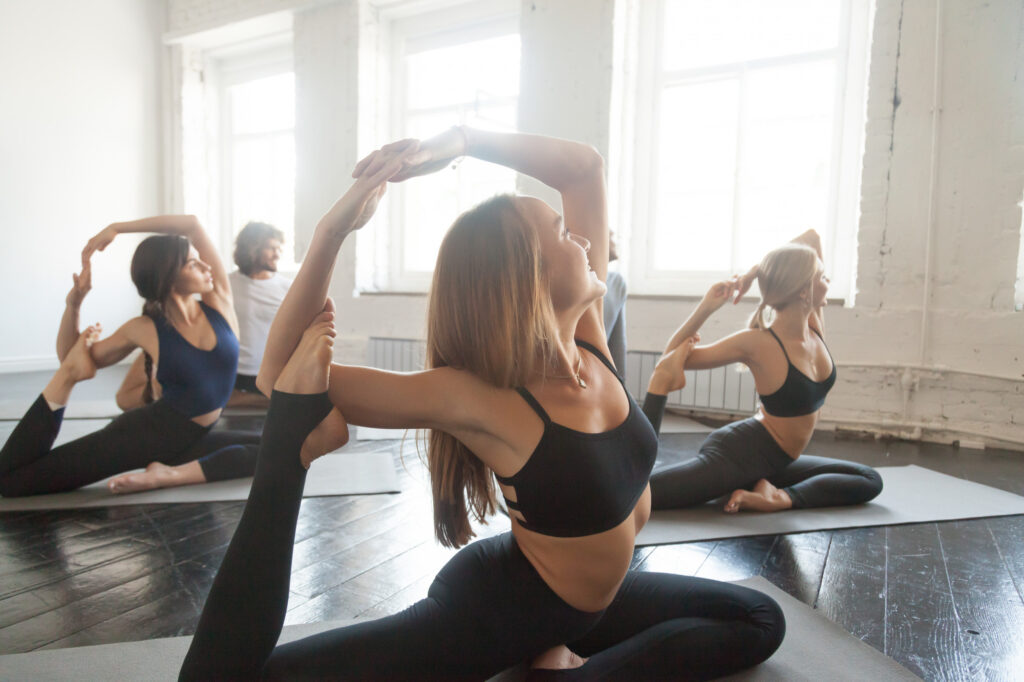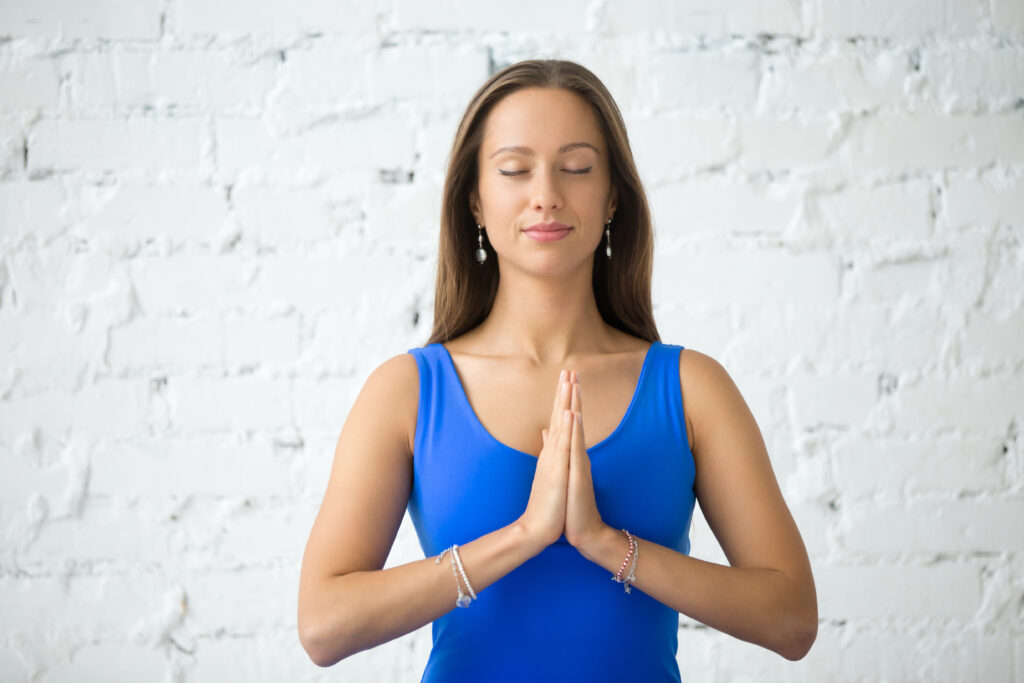The teaching of yoga has been going on for several millennia. Traditional Indian philosophy originated around the 20th century BC. Several schools and instructions differ not only in asanas but also in their approach to life. There is a wide range of mental and physical health advantages associated with yoga, including the following: asanas help to cope with many diseases, improve sleep and mood, help prepare for childbirth, and keep the muscles of the body toned.
The History of yoga
According to the data confirmed by archaeological excavations, the practice originated at the time of writing the Vedas and Upanishads. And it takes its roots in the esoteric teachings of Hyperborea and Atlantis. In the classical sense, yoga helps people get rid of everything material and reconnect with their authentic Selves is a multifaceted and holistic system about knowing oneself and one’s place in the world around us.
He organized separate teaching based on existing practices, experience, and knowledge. He owns the treatise “Yoga Sutra,” which is a classic. We cannot solely blame Patanjali’s method for writing the work in question. He only collected the data that reached him and compiled them. Classical yoga is divided conditionally into eight parts:
- Pit or restriction in relations with nature and people,
- Niyama or lifestyle,
- Asana or exercises,
- Pranayama or breathing exercises,
- Pratyahara or relaxation and control of emotions, relaxation,
- Dharana or concentration,
- Dhyana or Meditation,
- Samadhi or ecstatic state.
Historically, yoga is associated with karma. Karma is a causal relationship that determines a person’s future. Any thought, word, deed, or intention generates karma. It can be either positive or negative. By practicing, you can understand your inner state and the causes of events, analyze the consequences and reduce negative emotions and karmic manifestations.
What yoga gives a person
Yoga is not only a complex of asanas and breathing exercises a comprehensive and versatile approach to lifestyle, thought, and perception of the world. Yoga is an opportunity to realize your higher destiny, to gain true freedom, health, and victory over attachment to the material world. What is yoga in our time: healthy nutrition and strengthening of the body, unity with your inner Self through Meditation, understanding what is happening, and awareness of your path.
The list of benefits that yoga gives to a person covers almost all spheres of life and includes:
- Healing from many diseases,
- Beautiful, slender body,
- The ability to cope with the manifestations of diseases without medication,
- Flexibility,
- Endurance, strength, energy,
- The constant performance of yoga exercises allows a person’s potential to unfold,
- Mental balance,
- Ability to resist stress, depression,
- Inner peace,
- Feeling of joy, harmony,
- Feeling of inner freedom,
- If you do it regularly, then digestion
- and Emancipation is normalized.
There are also shifts occurring in the social life of practitioners. The flexibility of mind and good concentration of attention allows them to make a successful career. They are attractive, smiling, able to listen and support, give good advice, and open to peace and communication. Such people easily and quickly make acquaintances and quickly navigate life situations.
Practice allows you to cope with many complexes and to love yourself and your body. After six months of regular classes, self-confidence and self-awareness of your potential come. Many people notice that yoga makes people more optimistic. Practitioners switch to a healthy lifestyle: they prefer to walk a lot, give up bad habits, and eat only healthy and light food. Some people refuse meat. At some stage, yoga becomes a way of life — and that’s what it’s.
Asanas
Yoga practice is the performance of asanas, each at strengthening and improving the physical and mental state. While performing the workout and paying attention to my breathing pattern, a particular set of muscles’ internal organs and ligaments were oxygenated. With the alternation of relaxation and working conditions, even the deepest and most complex muscles.
All asanas into several groups:
- Balancing Asanas,
- Slopes,
- Inverted exercises,
- From a lying position,
- From a sitting work,
- From a standing position,
- With an emphasis on the hands,
- Twisting,
- Deflections.
Each group includes specific exercises that vary in complexity. Standing asanas and balances prepare the body and mind for further elaboration and development. They develop endurance and strength, stretch the body, and allow the muscles to become elastic. Regular exercise helps you achieve physical and emotional flexibility.
Asanas from a sitting position straighten the spine, teach how to sit appropriately, and monitor posture. They open the shoulder and hip joints, improve the digestive system, and benefit the work of the pelvic organs.
Leaning or stretching forward strengthens the posterior spinal muscles. Asanas are helpful for the digestive tract. They also allow the brain to rest, saturate it with oxygen, and help to cope with an elevated temperature.
Asanas from a lying position strengthen the abdomen, back, and legs muscle tissue. They develop a sense of balance. Exercises promote rapid weight loss and improve the digestive process. Twisting exercises work with the back muscles and benefit the digestive system’s organs.
Inverted asanas are the most useful. They strengthen the abdominal muscles, tone the internal organs, stretch and strengthen the body’s immunity. Exercises allow the brain and heart to rest, saturate the blood with oxygen, calm the nervous system, and relieve fatigue.
Deflections strengthen the immune system and improve posture. They act on the spine rejuvenatingly and develop freedom of movement. Exercises open the chest, improve breathing, and help to cope with the state of apathy and fatigue. Another classification of asanas divides them into static and dynamic. Static exercises develop strength and endurance, stretching and flexibility, duration of concentration, and stability.
Dynamic asanas train smoothness and accuracy, coordination of movements, emotional strength, and endurance.
Types of yoga: popular practices
Hatha
The most popular of them is Hatha. It includes practices such as:
- Ashtanga Vinyasa,
- Iyengar,
- Blame,
- Shadow Yoga,
- Universal,
- Yoga 23,
- Sivananda,
- Jivamukti,
- Trai.
Hatha yoga is a complex of physical and breathing exercises, the result of which is the disclosure of one’s potential, strengthening of muscle tissue, and improving health. Asanas calm the mind and allow you to relax. Some trainees refer to Hatha as preparation for Raja Yoga.
Hatha consists of:
Asan,
- Systems for eliminating imbalances in the body,
- Bandh,
- Wise,
- Pranayama,
- Meditation.
The description of asanas details the implementation process, indications, and contraindications. And attention is paid to proper breathing and concentration. The uniqueness of the type is exercises that stimulate the activity of hormonal glands and massage internal organs.
Karma
Another name for this type is Buddhi Yoga; a person has the right of choice and responsibility for the decision made from birth. All thoughts and actions have an impact on karma. People who spend their lives guided by altruistic actions and intentions while concealing their egos will have excellent chances to come. Karma practice teaches liberation from the negative karmic past and control of meanings, emotions, and actions. People practicing this type of yoga learn to perform an action and observe it simultaneously.
Raja
To achieve spiritual balance, trainees give up bad habits, and with the help of meditations, they perform complete control over their words, thoughts, and actions. Raja practice combines a minimum number of asanas and pranayamas: this is just a step in preparation for Meditation.
It consists of 8 parts:
- Self-restraint,
- Engaging in spiritual practices,
- Unity of mind and body through physical activity,
- Breath control,
- Separation of feeling from the object,
- Purposefulness,
- Meditation,
- Achieving Samadhi.
Jana
The yoga of knowledge leads to self-knowledge, understanding of the world, and the supreme truth. What yogis who practice Jana can do: free themselves from illusions and social beliefs, see the truth and observe the fundamental laws of the universe. This practice teaches that all troubles and sufferings come from a lack of knowledge. The primary tool is liberating the mind from the limitations of logical thinking.
The learning process in India boils down to teaching the follower to independently see the manifestation of higher laws and virtues in the world around him. The ultimate goal is to know the Personality of the Godhead.
Kundalini
Integral yoga or “royal yoga.” It consists of several sets of exercises and meditations aimed at solving one of the tasks:
- Cleansing of the lymphatic system,
- Getting rid of addiction,
- Overcoming a depressive state,
- Overcoming Anger,
- Transformation of sexual energy,
- Rejuvenation,
- External beauty, etc.
Regular yoga exercises allow you to realize your true desires and needs and gain strength and energy.
Anti-gravity Yoga
One of the youngest species. It is a hammock attached to the ceiling. Classes contribute to flexibility, plasticity, good movement coordination, and muscle tissue strengthening. During training, you can achieve maximum relaxation and understanding of your body.
Anti-gravity yoga combines elements of dance, gymnastics, and traditional asanas. And the goal is to improve both the physical and mental state.
Less common types of yoga:
- Agni,
- Underground yoga,
- Anusara,
- Ati or yoga of liberation,
- Ashtanga,
- Bikram,
- Bhakti, or yoga of ecstatic love, is the perfect kind of yoga,
- Yoga of Higher Consciousness or Buddhi,
- Dhyana,
- Guru,
- Taoist practice, which includes breathing and meditation exercises with visualizations,
- Japan,
- Jnana or the path of intellectual self-knowledge,
- Yoga of laughter,
- Yoga Practice for Dreams,
- Kriya,
- Kripalu,
- Laya Practice,
- Practice Mantra,
- Nada,
- Couple,
- Pair practice,
- Swastha,
- The Yogic practice of Sannyas,
- Siddha,
- Tantric yoga,
- Tibetan practice,
- The Six Yogas of Naropa,
- Sri Sri,
- Yantra.
In total, there are about 50 types of yoga in the world. Some are practiced in narrow circles, while others are rapidly gaining popularity. If desired, each person can find a practice that will correspond to their interests, goals, and physical and spiritual training.





